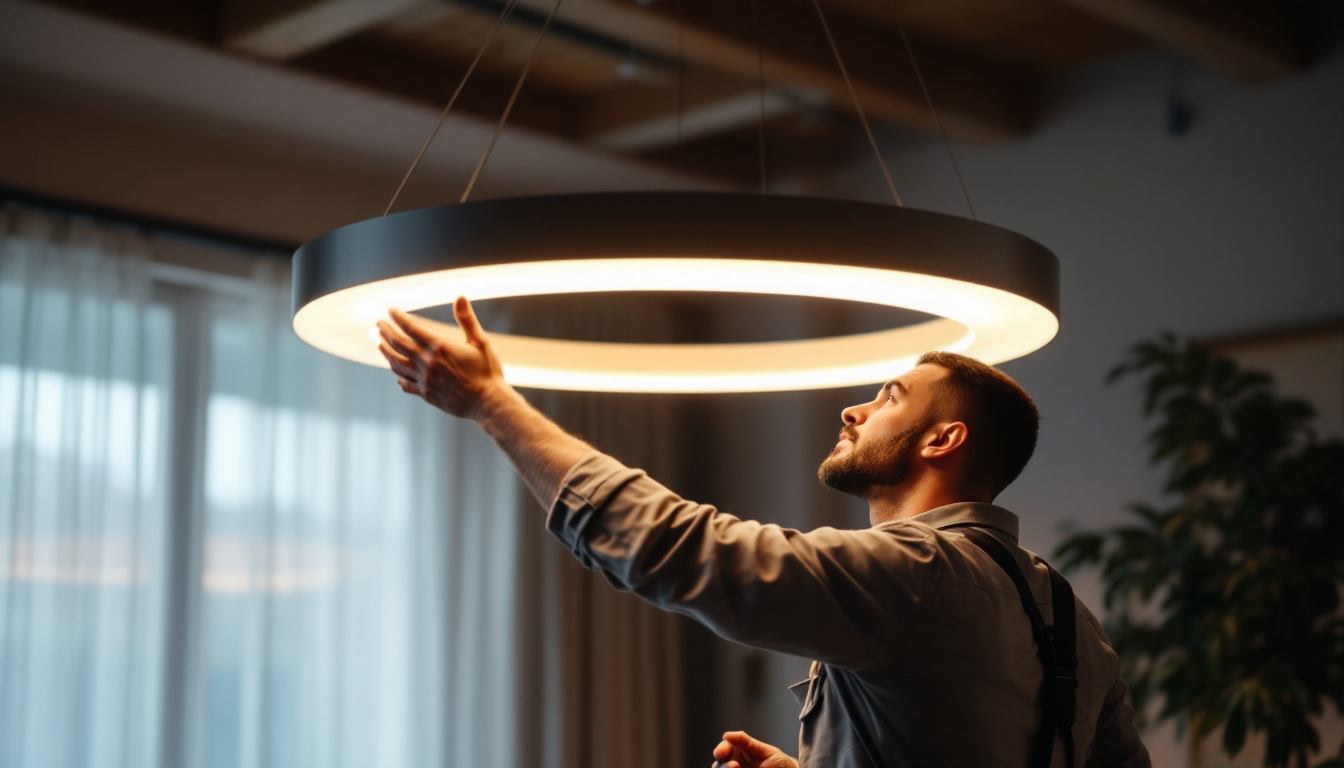
Lighting contractors often encounter a myriad of questions when it comes to industrial ceiling light fixtures. These fixtures are essential for illuminating large spaces such as warehouses, factories, and workshops. Understanding the nuances of these lighting solutions can help contractors make informed decisions and provide optimal solutions to their clients. This article aims to address some of the most common questions that lighting contractors face regarding industrial ceiling light fixtures.
Industrial ceiling light fixtures are designed to withstand the rigors of demanding environments while providing effective illumination. They come in various styles and technologies, each suited for different applications. Knowing the characteristics of these fixtures is crucial for contractors who want to recommend the best options to their clients.
There are several types of industrial ceiling light fixtures, each serving unique purposes. The most common types include:
Selecting the appropriate industrial ceiling light fixture involves several considerations. First, assess the height of the ceiling and the size of the area that needs illumination. High bay lights are generally recommended for ceilings over 15 feet, while low bay lights work better for lower ceilings.
Additionally, consider the type of work being performed in the space. For instance, areas requiring precise color rendering, such as paint shops, may benefit from fixtures with a high Color Rendering Index (CRI). Furthermore, energy efficiency and maintenance costs should also factor into the decision-making process.
Another important aspect to consider is the environmental conditions of the installation site. For example, if the area is prone to moisture or dust, selecting fixtures with appropriate ingress protection (IP) ratings is essential. Fixtures rated IP65 or higher can withstand dust and water, making them ideal for environments like food processing plants or outdoor settings. Moreover, the choice of materials used in the fixture’s construction can significantly impact durability; corrosion-resistant materials are often recommended for harsh environments.
Finally, it’s worth noting the importance of light distribution and beam angle in industrial settings. Depending on the layout of the workspace, a fixture with a narrow beam angle may be ideal for focused tasks, while a wider beam angle can ensure even illumination across larger areas. Understanding these nuances can help contractors provide tailored lighting solutions that enhance productivity and safety in industrial environments.
Proper installation of industrial ceiling light fixtures is crucial for achieving optimal performance and safety. Lighting contractors should be aware of various installation factors that can impact the effectiveness of the lighting solution.
When installing industrial ceiling light fixtures, several guidelines should be followed:
Yes, safety regulations play a significant role in the installation of industrial ceiling light fixtures. Contractors should be familiar with local building codes and safety standards, such as those set by the Occupational Safety and Health Administration (OSHA). Compliance with these regulations ensures that the installation is safe and meets industry standards.
Additionally, proper training for installation personnel is essential to minimize risks during the installation process. Using appropriate personal protective equipment (PPE) and following safety protocols can help prevent accidents and injuries.
Moreover, it is important to conduct a thorough site assessment before installation begins. This assessment should include evaluating the existing electrical infrastructure, identifying potential obstacles, and considering the specific lighting needs of the space. For instance, areas with high ceilings may require specialized lifting equipment for safe installation, while spaces with heavy machinery may necessitate additional precautions to avoid interference with operations. Understanding the unique characteristics of the installation site can lead to more effective lighting solutions and enhance overall safety.
Furthermore, the choice of lighting technology can also influence installation considerations. For example, LED fixtures often come with different mounting requirements compared to traditional fluorescent lights. LEDs may require specific drivers or heat sinks to function optimally, which can affect the layout and design of the installation. Therefore, contractors should stay informed about the latest advancements in lighting technology and ensure that they are using fixtures that not only meet performance expectations but also align with the installation guidelines set forth by manufacturers.
Maintaining industrial ceiling light fixtures is vital for ensuring their longevity and performance. Regular maintenance can help identify potential issues before they become significant problems, ultimately saving time and money.
Regular maintenance practices include:
To extend the lifespan of industrial ceiling light fixtures, consider the following strategies:
Energy efficiency is a growing concern in the industrial sector, and lighting contractors are often asked about sustainable options for ceiling light fixtures. Choosing energy-efficient fixtures can significantly reduce energy consumption and lower utility costs.
Energy-efficient lighting solutions, such as LED fixtures, offer numerous benefits:
Contractors can promote sustainability by recommending energy-efficient lighting solutions to their clients. Providing information on energy savings, potential rebates, and incentives for using sustainable products can encourage clients to make eco-friendly choices.
Additionally, contractors can suggest integrating lighting controls and smart technologies that enhance energy efficiency. Educating clients about the long-term benefits of sustainable lighting can lead to more environmentally conscious decisions.
Lighting contractors may encounter various issues when working with industrial ceiling light fixtures. Understanding common problems and their solutions can help contractors address client concerns effectively.
Some common issues include:
Effective troubleshooting involves a systematic approach:
Industrial ceiling light fixtures play a vital role in ensuring safety and efficiency in various industrial settings. By understanding the types of fixtures available, installation guidelines, maintenance practices, energy efficiency, and troubleshooting techniques, lighting contractors can better serve their clients and enhance their overall experience.
As the industry continues to evolve, staying informed about the latest technologies and best practices will empower contractors to deliver top-notch lighting solutions. Providing clients with the right information and support can lead to successful projects and satisfied customers, ultimately contributing to the growth and reputation of the contractor’s business.
Ready to elevate your lighting projects with fixtures that promise durability, efficiency, and cost-effectiveness? Look no further than LumenWholesale for a comprehensive range of industrial ceiling light fixtures. Our commitment to quality and affordability ensures that you can provide your clients with the best lighting solutions without breaking the bank. Take advantage of our wholesale prices, free shipping, and exceptional customer service. Make the smart choice for your next project and explore our selection of Wholesale Lighting at the Best Value today.

Discover how hanging lights round has become a game-changer for lighting contractors, offering innovative solutions that enhance aesthetics and functionality.

Discover the key considerations for lighting contractors seeking affordable pendant lighting solutions.

Discover the ultimate guide for lighting contractors to master solar-powered exterior fans.

Discover the essential guide for lighting contractors on ceiling lighting bars.